Embark on a flavorful journey as we explore 15 different types of tea, showcasing the diverse range of this widely loved beverage!
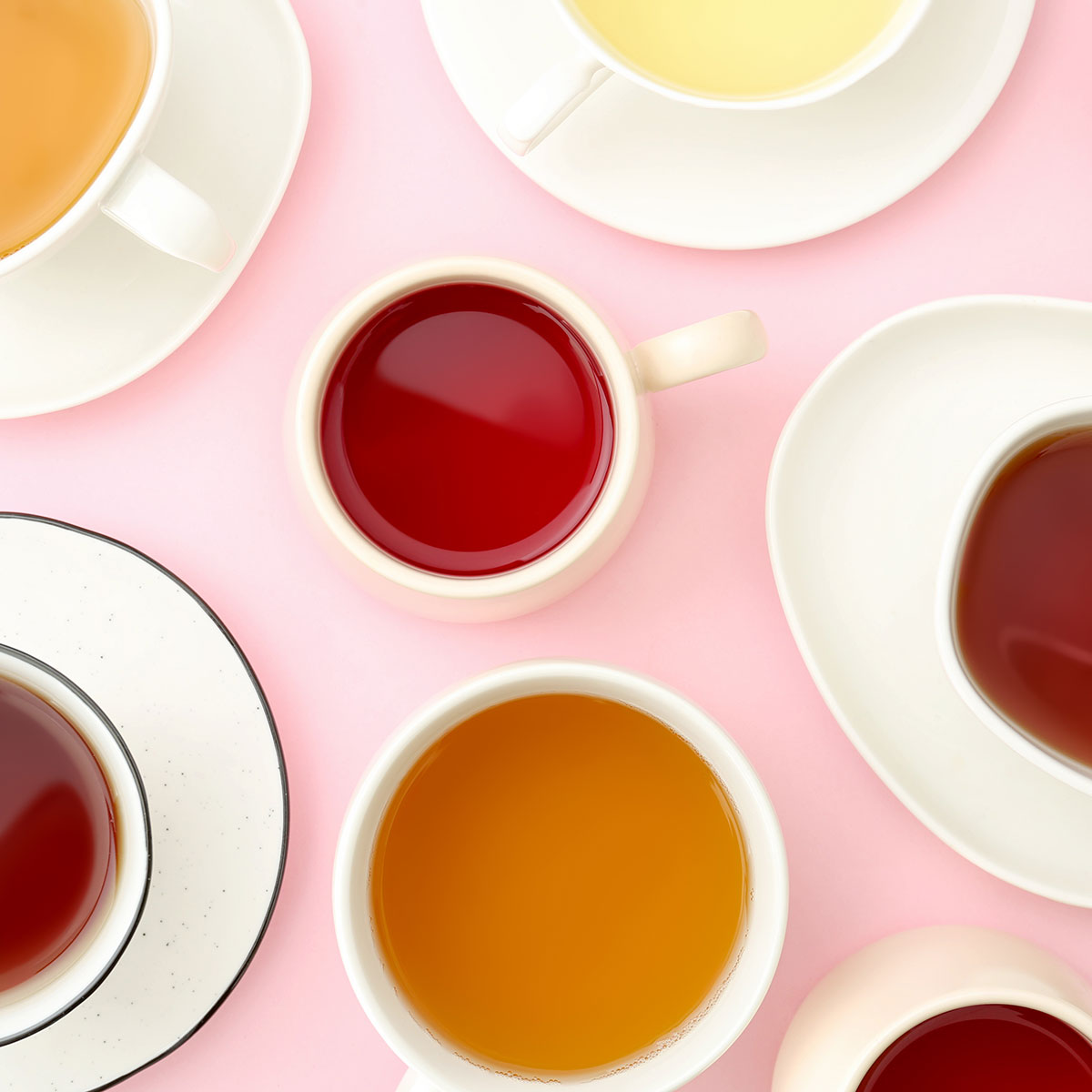
Tea is one of the world’s favorite beverages and has a rich history that spans centuries and continents. From its origins in ancient China to its global popularity today, tea has evolved into a diverse range of flavors, aromas, and brewing techniques.
Today, we are going to look at some of the most popular and also a few unusual varieties of tea. So whether you are a tea lover or a kombucha brewer, there is likely some new type of tea here awaiting your personal trial.
History of Tea
Our love of tea began in ancient China over 5,000 years ago. Chinese legend claims that Emperor Shen Nong accidentally brewed tea when leaves fell into his boiling water. He is also credited with teaching the Chinese about cannabis. Guess he knew something about leaves.
Tea was initially used for medicinal purposes, and was drunk with ginger or orange peel. It appears around 700 CE the elite began to drink tea only for its taste. Tea cultivation spread to Korea, Vietnam, and Japan where its use evolved into a revered practice known as the Japanese tea ceremony.
Tea also made its way to Europe through trade, introduced by the Dutch East India Company. It became a fashionable drink for the European aristocracy, but with improved shipping, tea became more affordable, and its consumption expanded.
The Industrial Revolution brought mechanized tea production (and the invention of tea bags!), making it more accessible to a wider population. Faster transportation methods like steamships and railways facilitated the global tea trade, and tea plantations were established worldwide. Today, the largest tea producers include China, India, Kenya, Sri Lanka, and Indonesia.
Types of Tea Most Commonly Used in Kombucha
There are some teas that are much better for brewing kombucha than others. Check out the Best Teas For Kombucha for more on each, but in general they are:
Black Tea
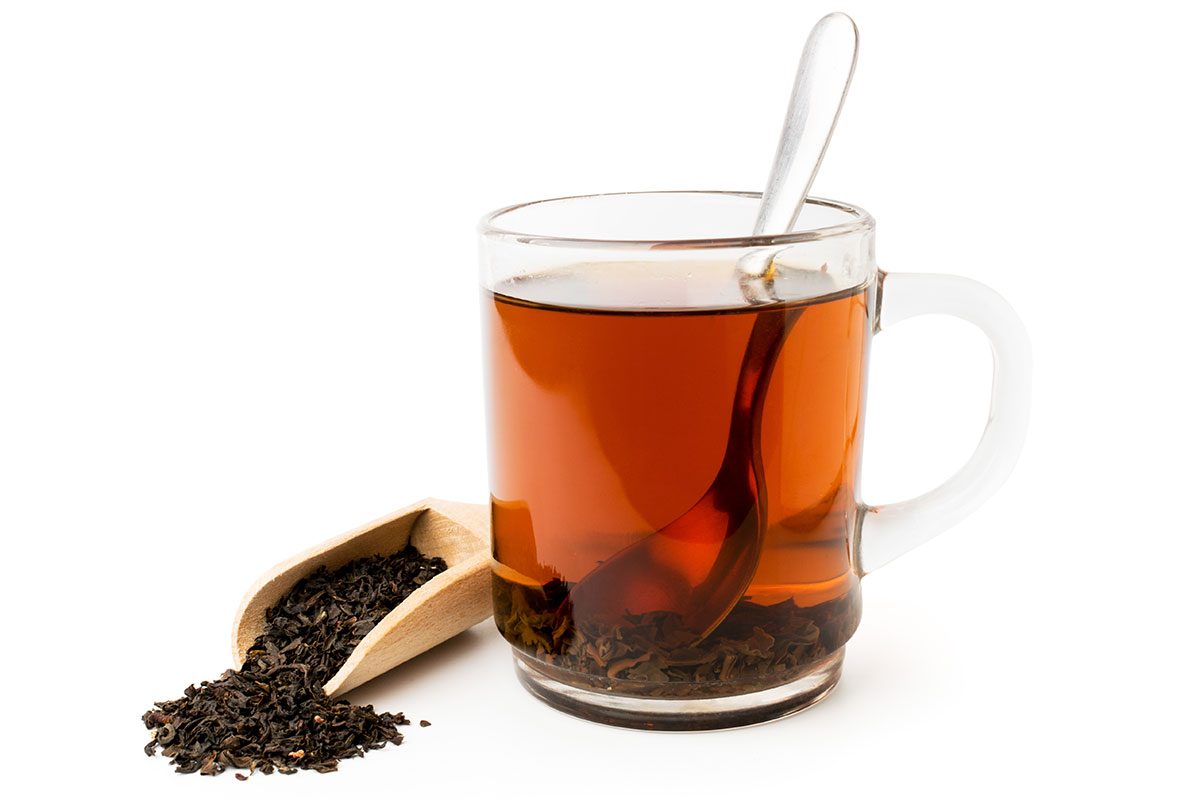
Black tea is the most drunk tea worldwide. We like it for its robust flavor and dark color. The leaves of black tea are fully oxidized, which gives them their distinctive taste and aroma. Black tea is often drunk with milk and sugar, and it is the base for many classic tea blends such as English Breakfast and Earl Grey.
Some other varieties of black tea include Assam, Darjeeling, Ceylon, Darjeeling, Rukeri, Pu-Erh, Scottish Afternoon, Irish Breakfast, Milima, Golden Tips, Temi Sikkim, Nimbu, Chai, and others.
Green Tea
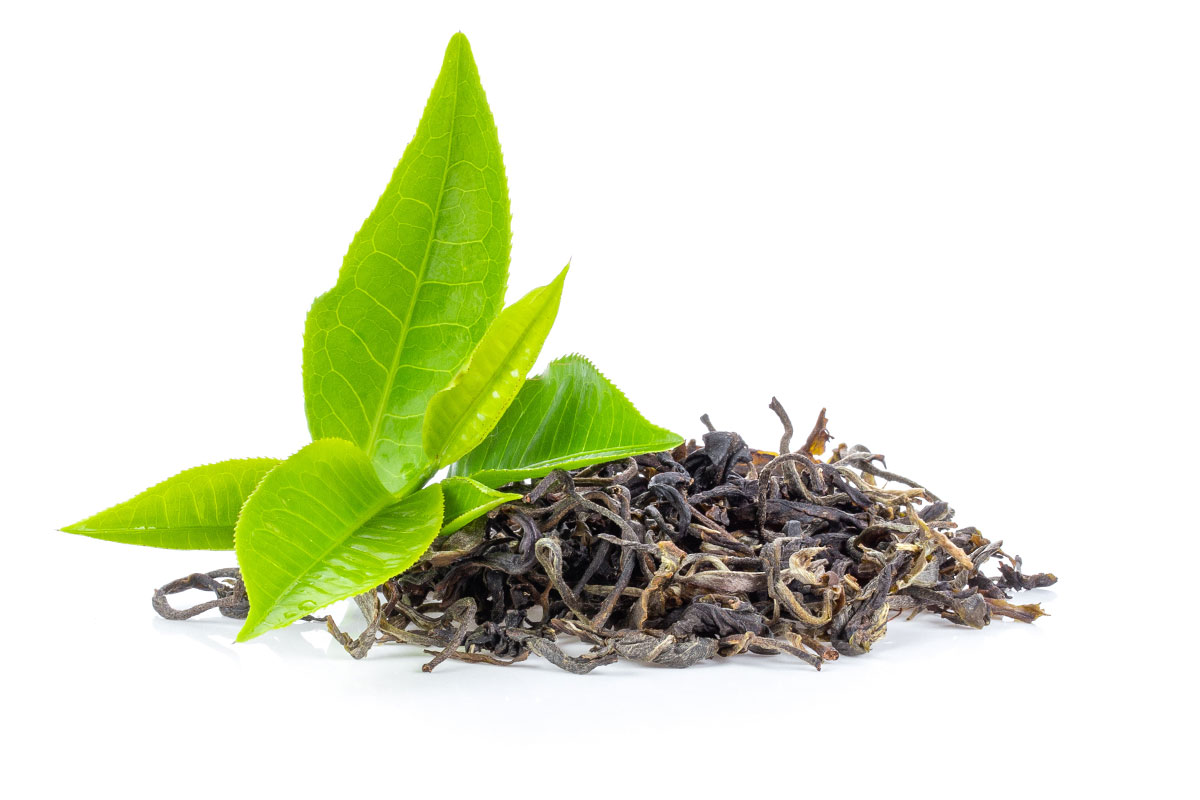
Green tea is known for its mild flavor and grassy aroma. It is made from the leaves of Camellia Sinensis (sorry, we had to include that cool name), the same plant used to produce other types of tea. Unlike black or oolong tea, however, green tea is only minimally oxidized. Stopping the oxidation process helps to preserve its natural green color and retain its flavor.
There are various types of green tea, including Japanese matcha, Chun Mee, Chinese Dragonwell, Jasmine, Anji Bai Cha, Maojian, Hojicha, Kukicha, Bancha, Genmaicha, Konacha, Moroccan Gunpowder, and others. Each of these has its own unique characteristics. Most Green tea is produced in China or Japan.
Herbal Tea
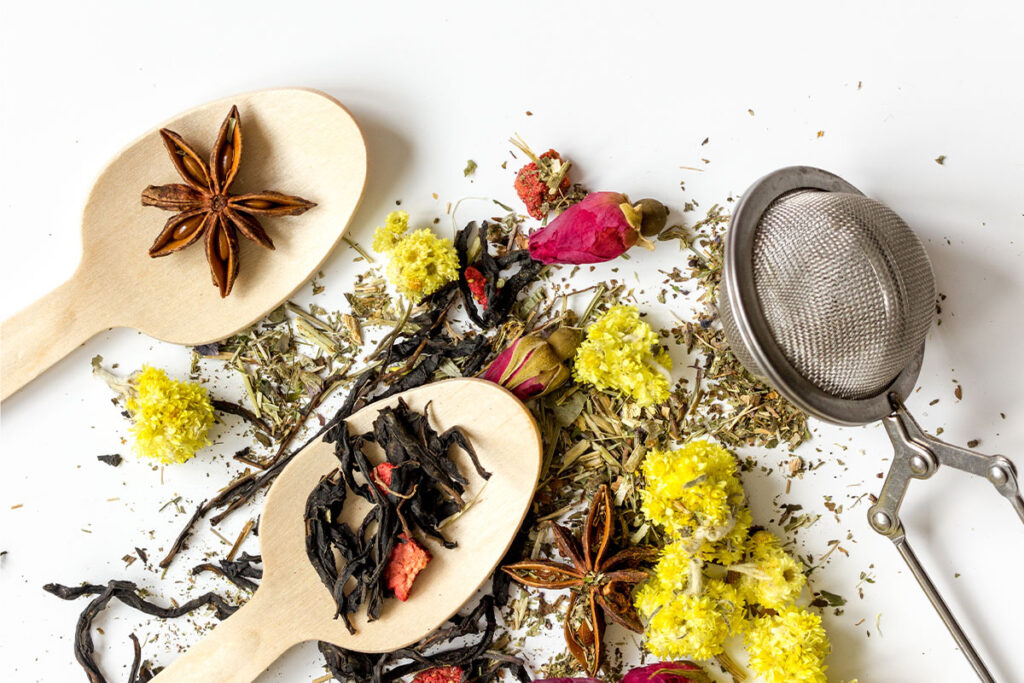
Unlike black and green tea, herbal teas (or tisanes) are not made from Camellia Sinesis leaves. Instead, they come from a variety of herbs, spices, flowers, and fruits. Herbal tea infusions can come in a wide variety of flavors, aromas, and purported health benefits, and are often favored for their soothing and calming effects.
Some popular herbal teas include Chamomile, Peppermint, Hibiscus, Lavender, Licorice, Olive Leaves, Turmeric, and Rooibos tea among many others.
White Tea
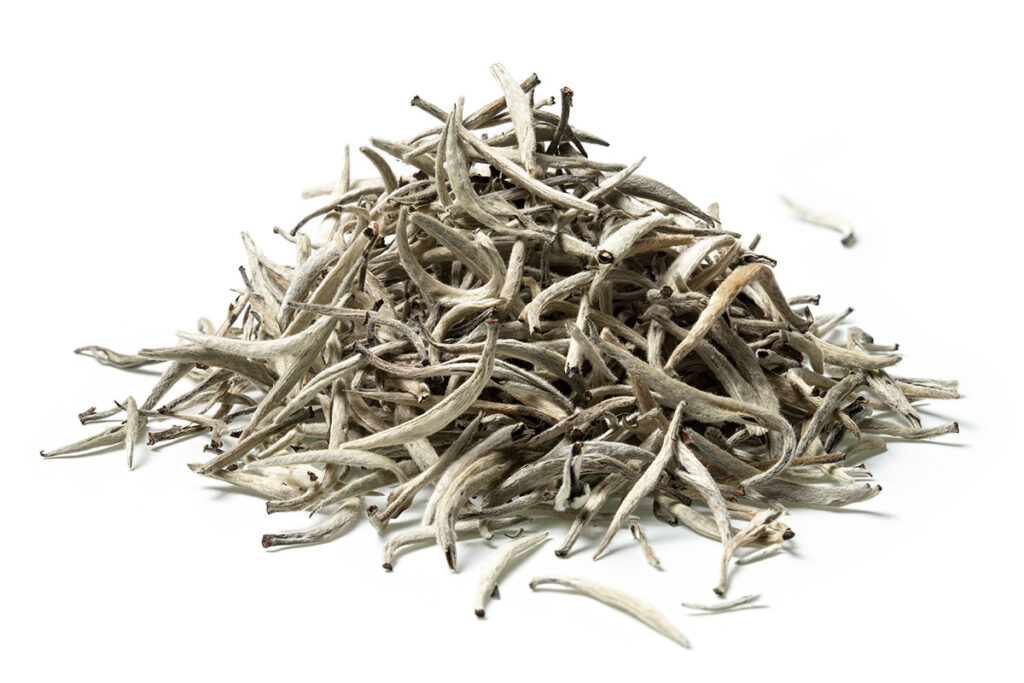
White tea is the least processed type of tea. The leaves of white tea are only minimally oxidized and withered, which results in a light, almost floral-tasting tea. The tea is easily identified by its silver-white buds, and it is usually brewed at lower temperatures (175 – 180 F) for a shorter duration compared to other types of tea. White tea is more delicate than black or herbal tea, so you brew it with cooler water to avoid damaging the leaves.
Some popular varieties of white tea include Silver Needle, White Peony, Shou Mei, Gong Mei, and Darjeeling White.
Other Types of Tea
Of course, there are virtually thousands of types of tea in the world. While not all are suitable for kombucha brewing, they are delicious on their own!
Butterfly Pea Flower Tea
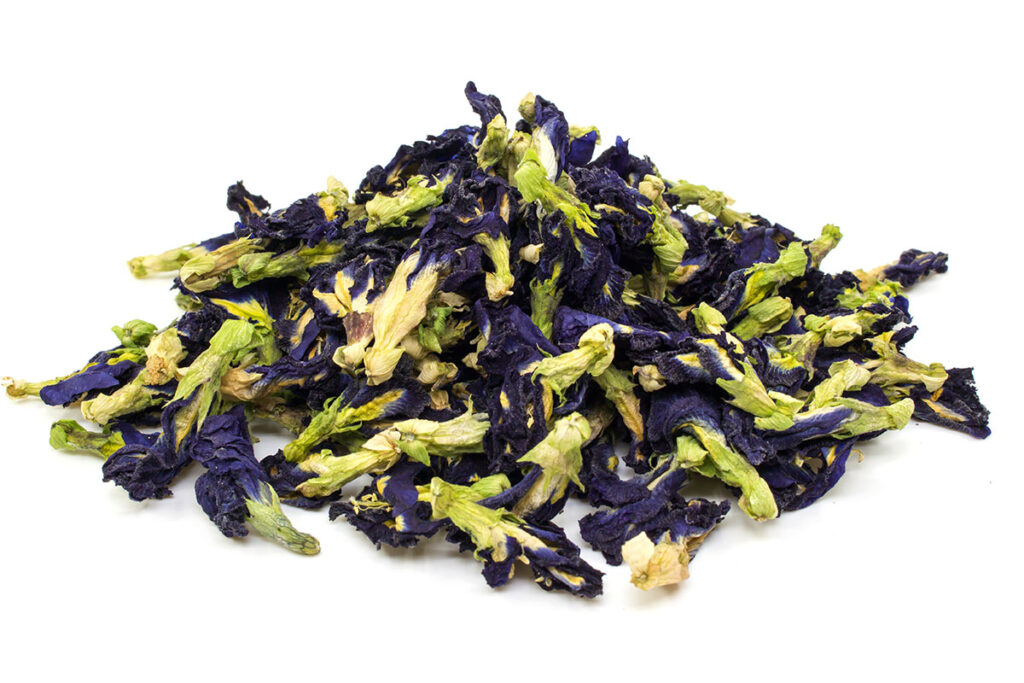
Butterfly pea flower tea is made from the petals of the Clitoria Terna tea plant, which is also called Asian pigeon wings. When steeped in hot water, the petals release a blue pigment that creates an aesthetic blue tea that can be drunk hot or iced. Besides its stunning appearance, this tea is also credited with potential health benefits as it contains antioxidants and has anti-inflammatory properties. (Learn how to make butterfly pea flower kombucha here).
Guayusa Tea
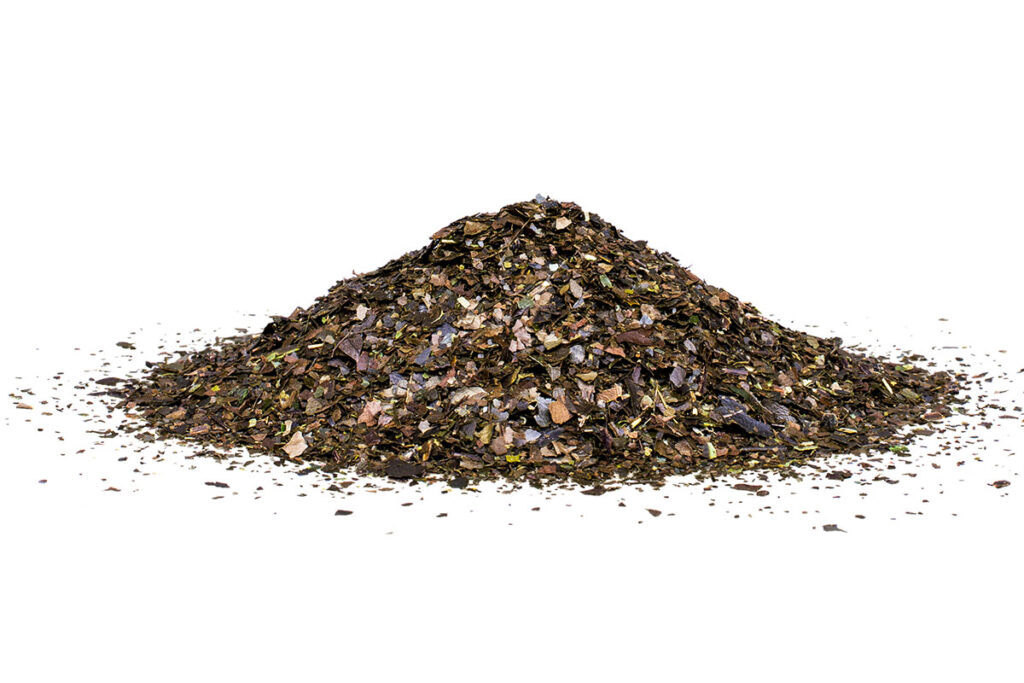
Guayusa tea is native to the Amazon rainforest. It is made from the leaves of the Ilex guayusa tree, which is a close relative of yerba mate. I know this sounds like Dr. Seuss, but stick with us. Guayusa tea has a smooth, earthy flavor with a slightly sweet aftertaste. It is often drunk in the morning as a way to provide energy and focus which most of us seek in the morning. Some people also find that guayusa has a calming effect, which can help to reduce stress and anxiety.
Lapsang Souchong
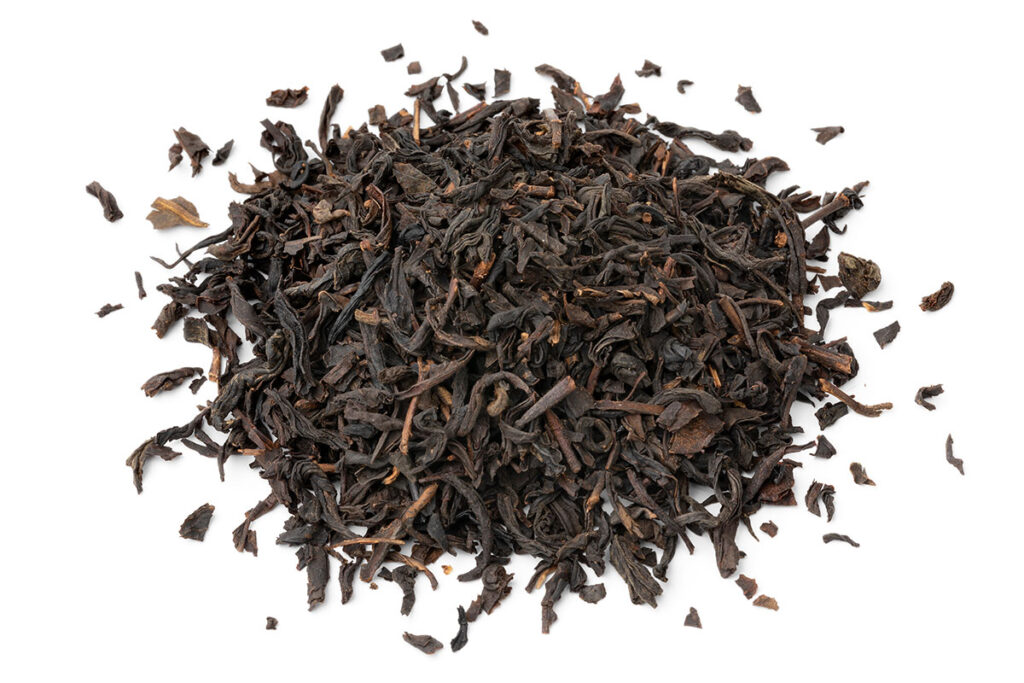
If you’re a fan of smoky flavors, then Lapsang Souchong is a tea you have to try. It originated in China’s Wuyi Mountains, and is a black tea that is dried over pinewood fires, giving it a distinct smoky aroma and flavor. According to Chinese legend, the tea was discovered by accident when the tea leaves were left to dry over a fire. The fire-drying process provides a unique smoky flavor. Lapsang Souchong is a robust tea that is often drunk with milk or is used as a base for smoky tea-infused cocktails.
Matcha
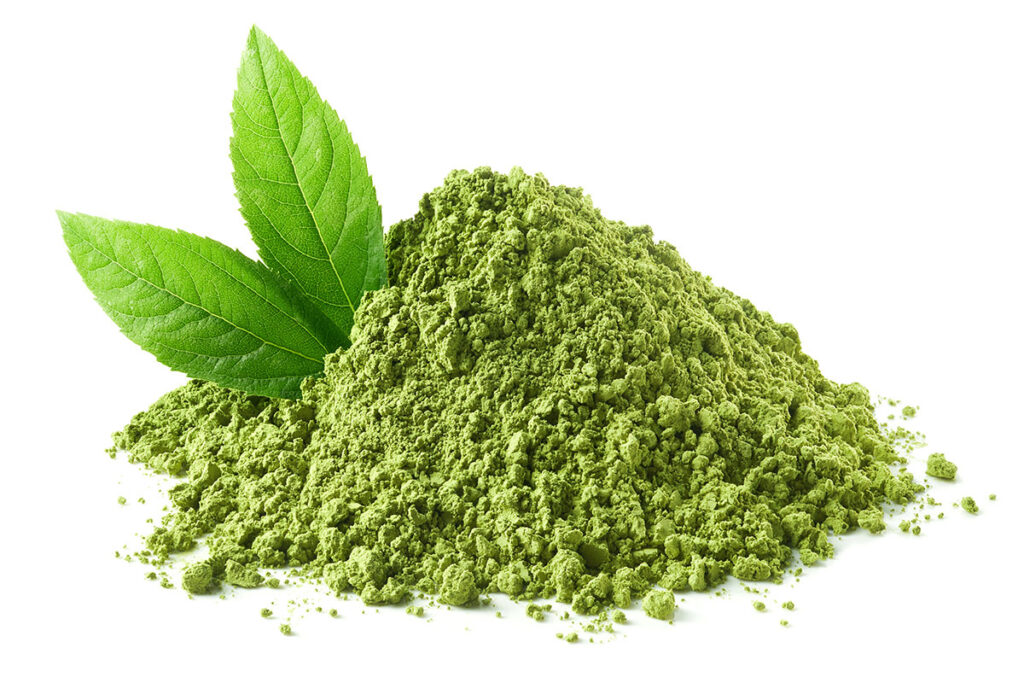
Matcha tea is a powdered green tea made from shade-grown tea leaves that are ground into a fine powder. The leaves are shaded from sunlight before harvesting. This increases their chlorophyll content and gives matcha the vibrant green color you see in the photo. Matcha has a pleasant umami flavor with just a slight bitterness and is traditionally prepared by whisking the powdered tea with hot water to create a frothy tea. It is also used in cooking and baking, adding a unique flavor and color to some recipes.
Mate Tea
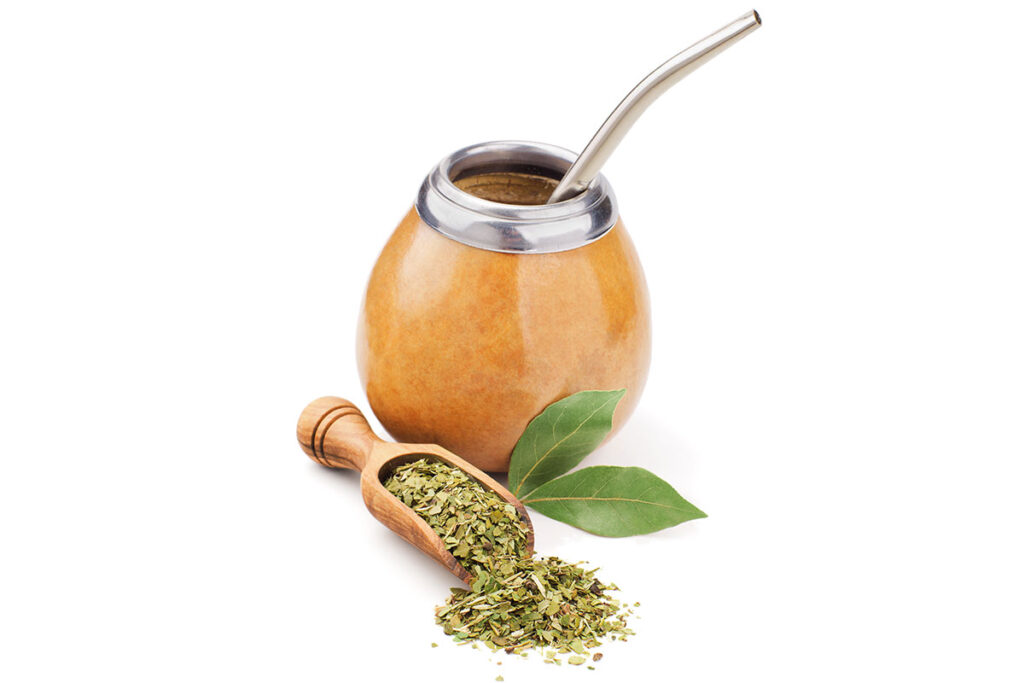
Mate tea is a South American tea with a lot of tradition to it, as evidenced by it being traditionally drunk from a gourd with a metal straw called a bombilla. It is particularly popular in Argentina, Uruguay, and Paraguay. It is made from the leaves of the yerba mate tree, which is a type of holly. Mate tea has a bitter, earthy flavor that is often described as an “acquired taste”.
Oolong Tea
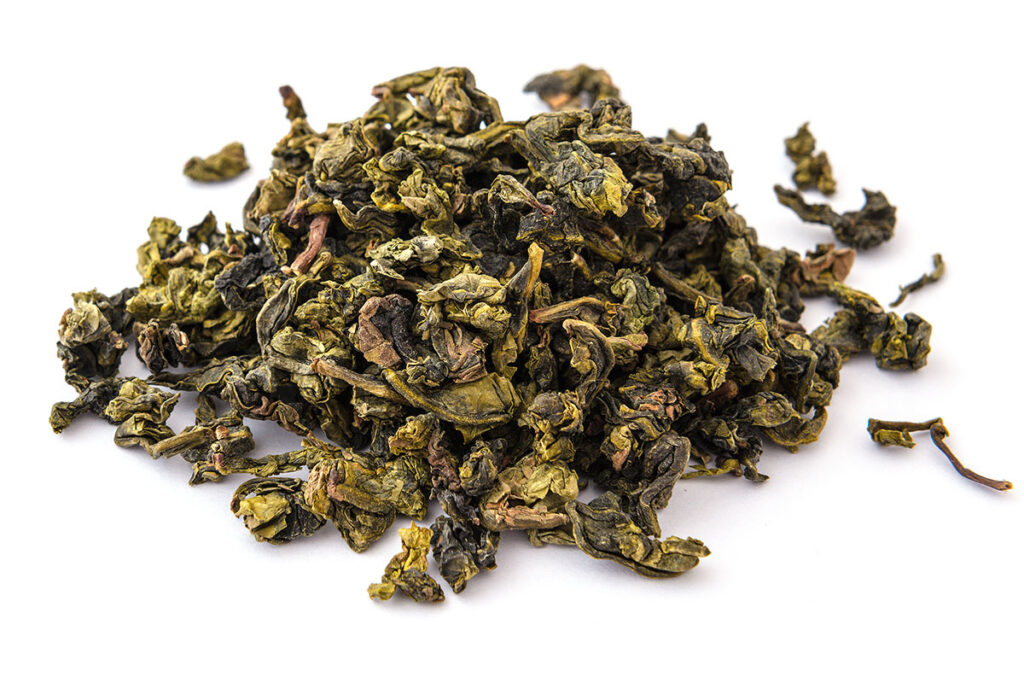
Also known as Wulong or Wu long tea, oolong is a partially oxidized tea that falls between green tea and black tea in terms of oxidation used in making it. This gives oolong tea a unique flavor that varies from light and floral to rich and fruity. Oolong tea is often associated with Chinese and Taiwanese tea traditions, and some popular types of oolong tea include Tie Guan Yin, Da Hong Pao, and Oriental Beauty.
Pu-erh Tea
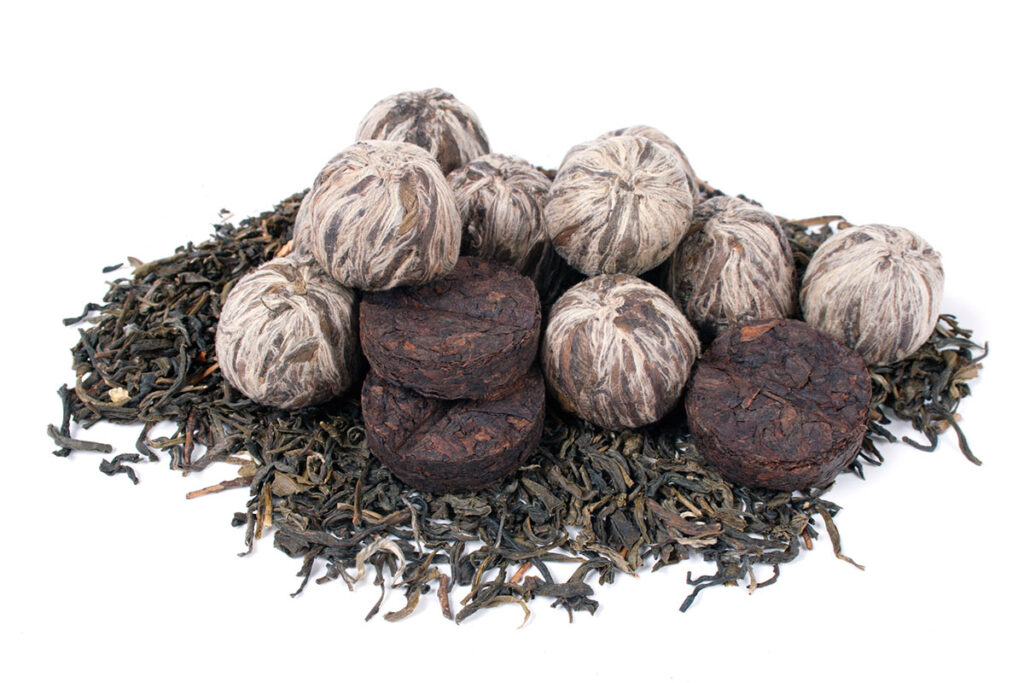
Pu-erh tea is a fermented tea with a distinctive flavor and aroma. It is produced in the Yunnan province of China and aged for several years, which gives it a unique flavor that develops over time. Pu-erh tea can be either raw (sheng) or ripe (shou). Raw pu-erh has a more pronounced and complex flavor, while ripe pu-erh is milder and smoother. Pu-erh tea is often compressed into cakes or bricks and is credited with potential health benefits.
Purple Tea
Purple tea is grown primarily in Kenya, and has become a valuable export for that poor nation as the tea has gained popularity due to its flavor and potential health benefits. It is made from a unique variety of the Camellia Sinensis plant that has purple-tinted leaves due to their high concentration of anthocyanins. Anthocyanins are a type of flavonoid that has been attributed a variety of health benefits, including reduced inflammation and improved heart health. The tea has a light floral flavor with a slightly sweet aftertaste. It is also low in caffeine, making it a good choice for those who are sensitive to caffeine.
Yellow Tea
Yellow tea is a Chinese tea with a distinctive flavor and aroma that comes from its processing. It is lightly fermented by wrapping the tea leaves in a cloth and allowing them to slowly ferment and turn yellow. This unusual process results in milder-tasting tea than green tea but richer than white tea. Yellow tea is also credited with several health benefits, as it is rich in antioxidants and has been shown to have a positive effect on digestion.
Tea Blends
Breakfast Tea
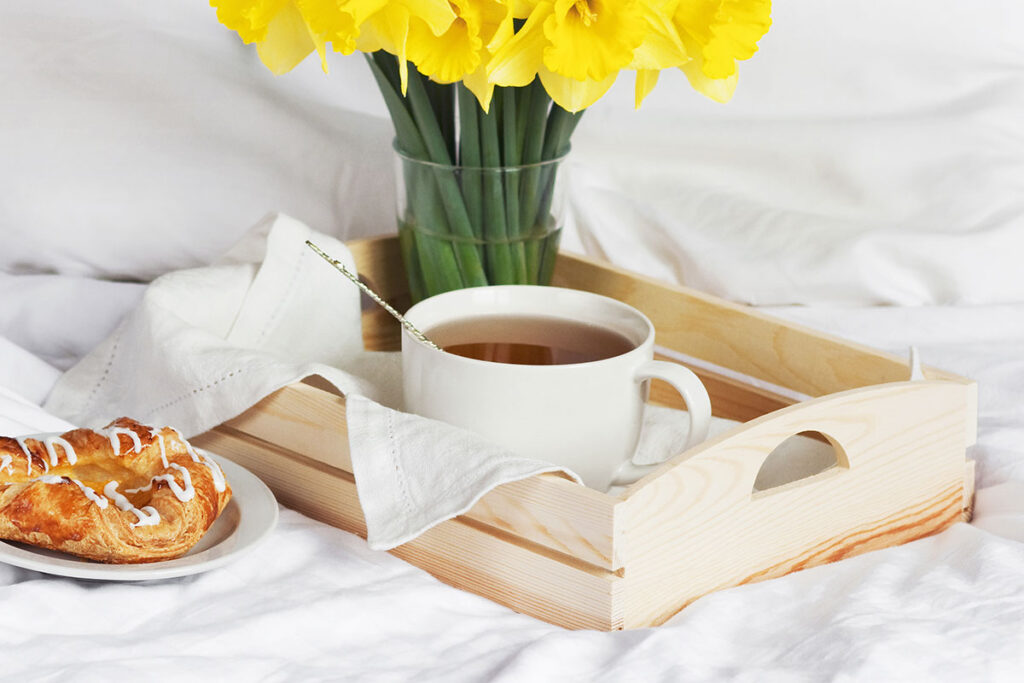
First, let’s just say you can drink any tea you want at breakfast (there are no rules to this), but most teas labeled “Breakfast Tea/Blend” are black teas of small particle size that steep up quickly, are strong, deliver lots of caffeine, and can take cream and sugar without turning into watered-down skim milk.
It’s like morning coffee for those who don’t like coffee. These blends often feature teas from the Assam region of India, Ceylon teas (Sri Lanka), and African teas since they tend to have brisk, earthy characteristics. The small particle size will ensure that the cup steeps up strong and full-bodied quickly and delivers as much of its caffeine into the cup as possible.
Chai Tea
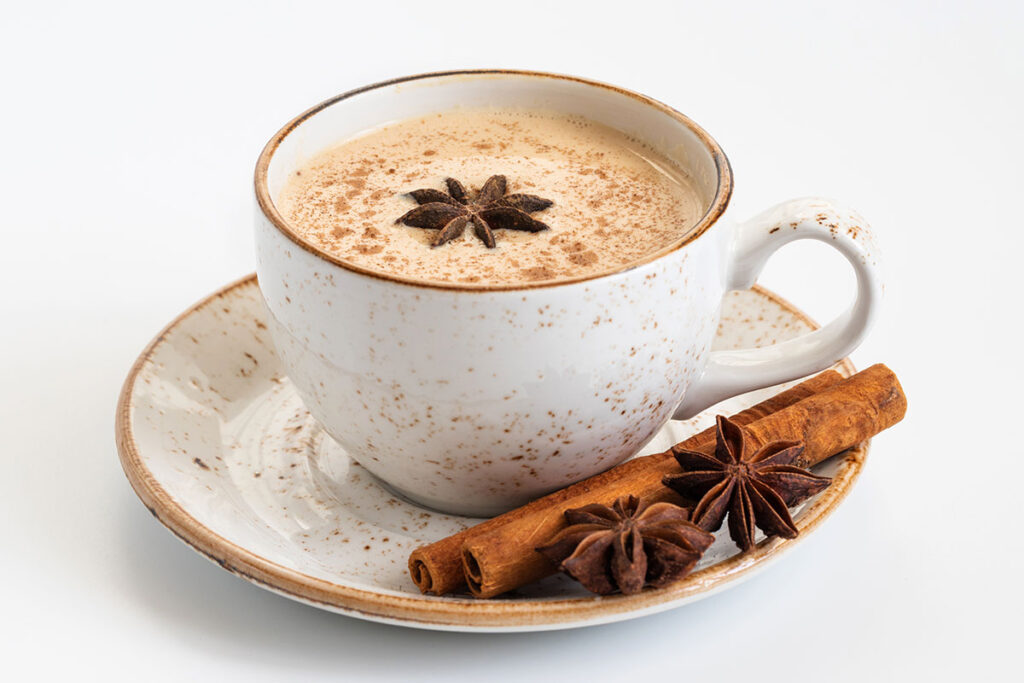
Masala chai (most often shortened to “chai” in America) is the traditional drink of India and is defined as a blend of black tea, milk, sugar, and spices. There is no exact recipe for how to make this, but all include those four ingredients. The word “Masala” means “blend of spices” and the ones most commonly used are ginger, cinnamon, cardamom, and clove (though there are many others that might be included). In its most traditional form, the black tea, sugar, and spices are boiled in water. Then milk is added, boiled again, strained and served.
This wraps up our look at different types of tea to use in your buch or just to sip in the morning. We hope you found what you are looking for, and as always Happy Brewing from your friends at Brew Buch!


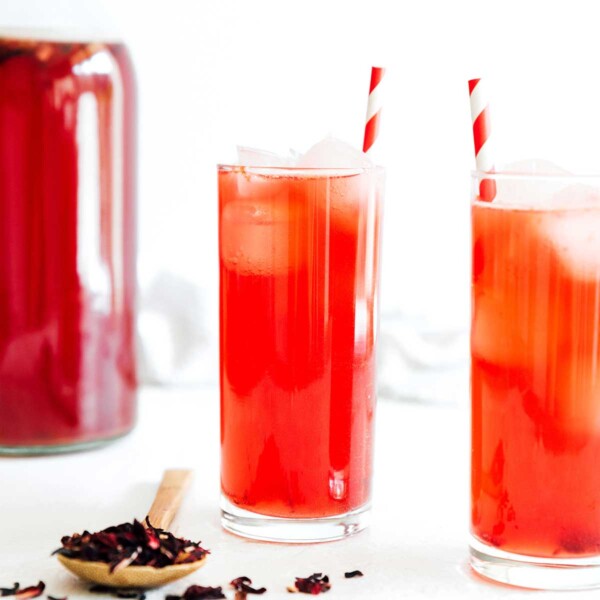
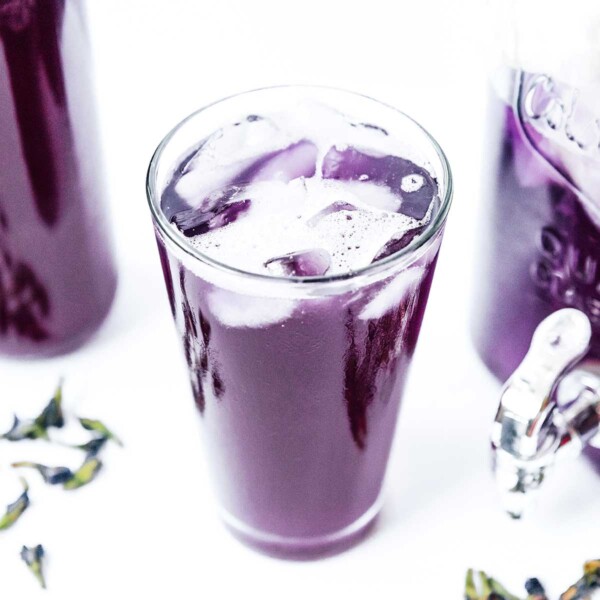
a nice explanation